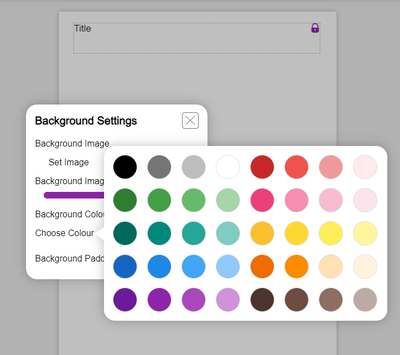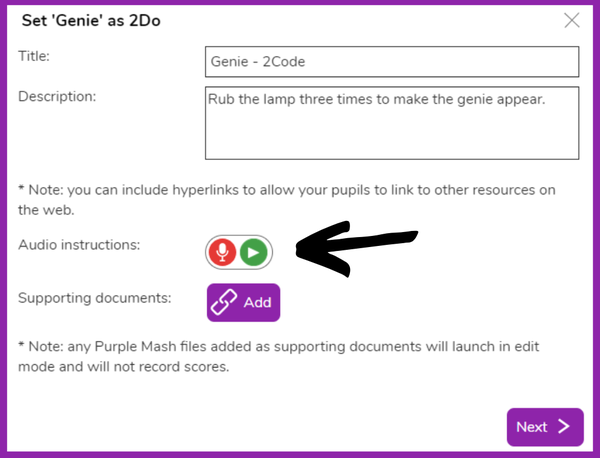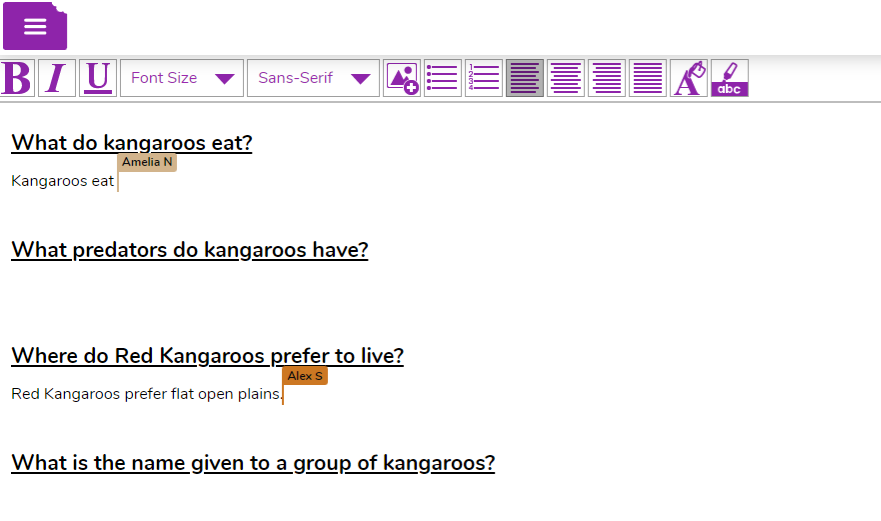Nov. 15, 2023
Purple Mash has been designed specifically for primary-aged children so it is child-friendly and easy for them to find their way around. Our teams have been working hard this year to ensure that tools and icons are consistent across all parts of Purple Mash, making it even easier for children to use.
Purple Mash is available to try with a free trial, allowing you to explore the site and try out the features for yourself.
When you first get Purple Mash, or if you have new children joining the school, you can use Unit 1.1 to allow children to familiarise themselves with Purple Mash and to find their way around the site, so it's easy from the get go!
Or you might want them to start in MiniMash with Unit F.1 where they will become familiar with a virtual classroom designed for very young children.
One of the strengths of Purple Mash is its accessibility. The platform offers a range of tools and features that can be tailored to meet the unique needs of each student. With adjustable font sizes and customisable backgrounds, students with visual impairments or reading difficulties can access and engage with content more effectively.



Students often require multi-sensory approaches to facilitate their learning. Purple Mash integrates multimedia elements such as images, videos, and audio clips, enabling students to access information in different ways. This multi-sensory approach enhances engagement and comprehension, particularly for students with special educational needs. Teachers can also easily create interactive lessons and activities using Purple Mash's tools, providing an immersive learning experience for all students.
Purple Mash offers a wealth of resources and activities that can be tailored to suit individual needs. Teachers can assign specific tasks, projects, or assessments based on each student's abilities and areas of improvement. This personalised approach helps special educational needs students to progress at their own pace, building confidence and competence in their academic journey.

Collaborative learning experiences are essential for students to develop social skills, teamwork, and communication abilities. Purple Mash provides a safe and interactive online environment where students can collaborate on projects, share ideas, and receive feedback from peers and teachers. This collaborative feature encourages inclusive participation, fostering a sense of belonging and promoting positive relationships among all students.

In 2022, an independent research report was conducted by Dr Fiona Aubrey-Smith in the UK (EdD MA(Ed) MMus PGCE BA(Hons) FCCT FRSA) in order to investigate the extent to which Purple Mash meets the needs of learners and teachers. To add to this blog, we have taken extracts that relate to how Purple Mash supports students with special educational needs. The teachers here refer to the Computing Scheme of Work which we have adapted in line with the Australian curricula and is called DigiTech Scheme of Work.
“It has been an effective tool in ensuring all children can access the computer curriculum linked to their individual needs.”
- Mrs W, Teacher
“It definitely supports SEN and lower ability children because it allows us to add support in there such as voice notes - they can access work that wasn’t possible before.”
- Jen McCulloch, Computing Teacher, New Brighton Primary School
“Most of the schools within our trust that worked with a lot of children with EAL have something called communication imprint… We use Purple Mash a lot inside activities - turning the activities into pictures so children could access them through visual scaffolding.”
- Helen Worrall, The Harmony Trust
“All of our children, whether they're SEND or EHCP, they've all been able to access 2Code and be successful… For example, I've got a boy in my class who has got an EHCP and is quite high needs, but it's been simple enough for him to engage him even in the year 6 coding lessons, so that's been really positive for him.”
- Josh Rigby, The Inspire Learning Partnership
“Obviously in terms of the assistive side of it, it's brilliant for children that aren't able to record their handwriting in the same way as others…it's been fantastic.”
- Nicola Folwell, Deputy Headteacher, Glebelands Primary Academy
“We sit in one of the highest deprivation areas in the country and a lot of our children have English as an additional language (EAL). That was one of our biggest barriers to learning. So it was really useful when the update for Purple Mash introduced being able to create and upload your own resources. And also when you could link a 41 YouTube video. So we took the decision that we would screen record our voice and give voice notes, that's very helpful, particularly for those children being able to then being able to hear you, giving them the feedback - it's way more beneficial than an attached comment, which they either can't read or can't understand.”
- Oliver Booth, Richmond School, The Harmony Trust
“For some of the children that perhaps might struggle if they were presented with a blank document, we use the templates and there's a lot of scaffold within that, a lot of the tools are really, really clear and easily accessible for them. It’s quite visual so they can navigate their way around more independently perhaps than if it was outside of Purple Mash. It provides the right scaffolds for those children”.
- Natalie Loat, Sherborne House School
“My lower prior attaining children have found it easy because it is so straightforward and it is that step-by-step approach where they have small instructions. They can see what it should look like under each stage. I think we were designing a house and they could see that this is how we adjust the shape and then you can fill in your own pattern or you can select a pre-existing pattern and the learning steps are broken down more. Having spoken to them, they don't see themselves as below for computing. They see themselves as an equal, which is nice and I think where they're shown an example, but they have the freedom to adapt it in whichever way they like to then they're still successful because they're seeing what they envision on the screen and they've got that chance to talk to their partner next time. OK, this is what mine was like. How did you do that? And a lot of it is them solving their own problems because they're using their peers rather than coming straight to me as the teacher. In the upper school there's more reliance on the child rather than the teacher, so we kind of show the steps, ask questions that they have initially and then a lot of them will problem solve themselves. If Purple Mash wasn't so easy to follow, we would have more children who would be stuck and then disengaged. But because it's easy to use, they are really keen - it's their favourite lesson. I think it’s because it links in so closely with our wider teaching and learning strategies – metacognition and learning to learn.”
- Mark Blissett, Sherborne House School
“I think the fact that the [coding] activities that they do from the fish, the bubbles, the magician… they start off really simple and they can work it through step by step, and that really helps support our lower ability children. But then the fact that at the end they can then go on to make their own, that supports our higher achievers. So they're all starting off at the same level, but the outcome is often very different. And obviously because I set that in the task, I can see that and I can mark against it. And the fact that the objectives are there now that's really easy for me to just do a quick colour grade as to what they've actually achieved without the children feeling that they haven't achieved. So I think that's really important and then I know because they hand it in as a task. I also get them to RAG themselves, so they use the stars to 42 decide whether they are red, orange or green, you know, bottom middle, top and it's what they feel they've achieved in computing.”
- Samantha Shallcross, Head of Computing, Bromley High Junior School
“I think the [Purple Mash Computing Scheme of Work] is run easy enough that if they miss a week, they're not miles behind. They can catch up enough because the steps are straightforward. So we've had some children that are particularly low over the last couple of years who have still managed to be successful because steps are so easy to follow that they said, OK, well, I was at this point last week, I just need to do this step and then I'm back where everyone else is.”
- Mark Blissett, Key Stage Two teacher, Sherborne House School